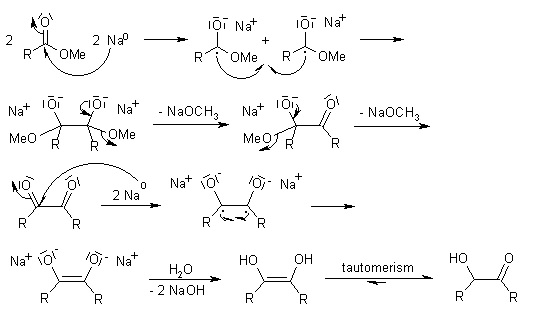Organic Synthesis
Formation
| Mechanism: Acyloin Condensation
|
 The bimolecular reductive coupling of carboxylic esters by reaction with metallic sodium in an inert solvent under reflux gives an α-hydroxyketone, which is known as an acyloin. This reaction is favoured when R is an alkyl. With longer alkyl chains, higher boiling solvents can be used. The intramolecular version of this reaction has been used extensively to close rings of different sizes, e.g. paracyclophanes or catenanes. |
|
Return |